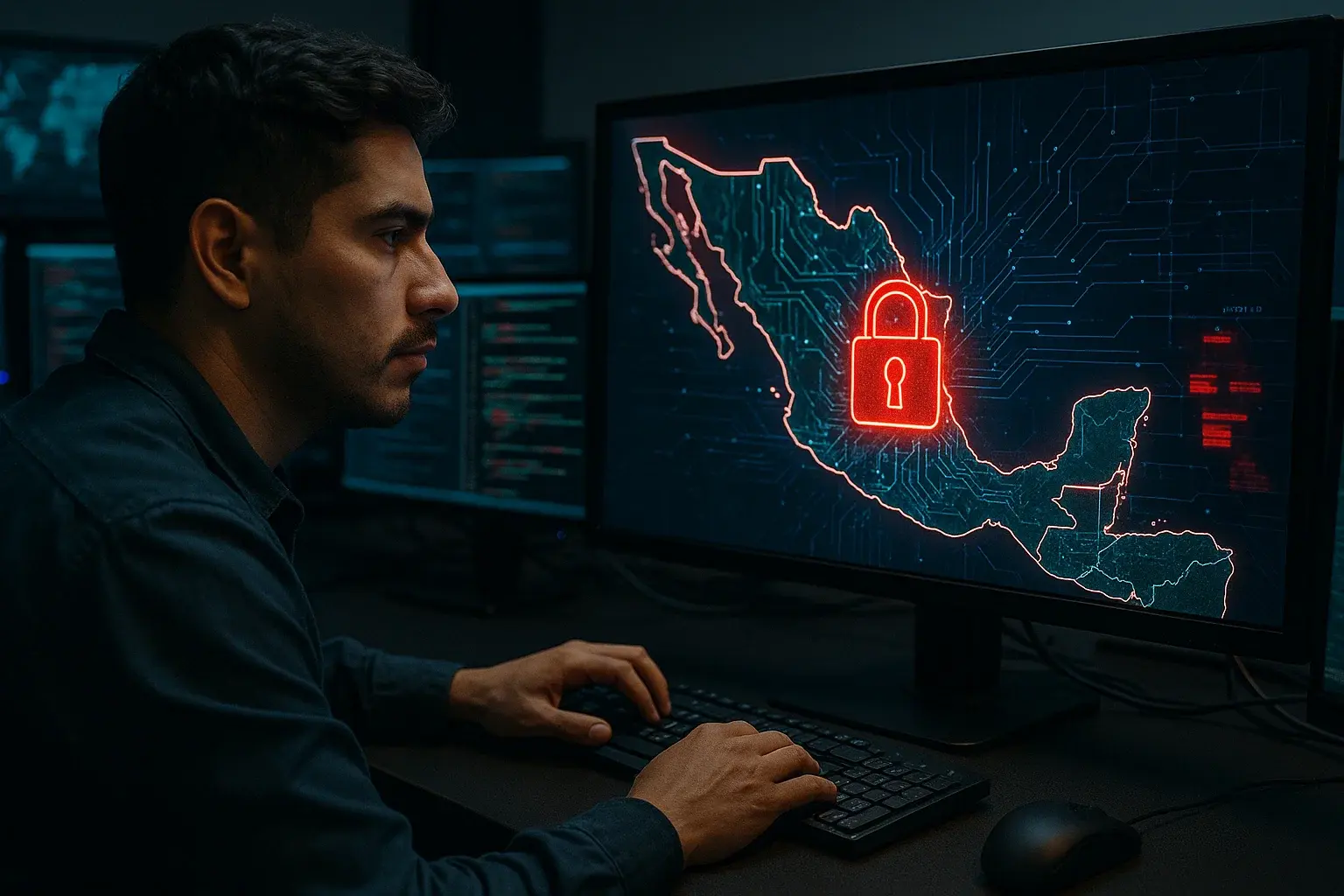In the first half of 2025, Mexico has become one of the countries with the highest cyber activity worldwide — not only due to the volume of attacks, but also because of its growing cybersecurity response. According to Fortinet’s FortiGuard Labs report, Mexico accounts for nearly 25% of global threat detections, ranking third in Latin America for number of incidents.
These numbers are no coincidence: they reflect the increasing sophistication of cybercriminals, who now use AI-powered tools to create more targeted, stealthy, and evasive attacks. In this context, Mexico faces a dual challenge: containing the rise in threats and becoming a cybersecurity role model.
A Growing and Complex Threat Landscape
The spike in cyberattacks in Mexico is linked to increased connectivity and the mass adoption of digital services across all sectors. But the real concern lies in the evolving tactics used by attackers.
Instead of brute-force system breaches, most attackers now rely on social engineering tactics like phishing and credential theft — tricking employees into unwittingly granting access.
Just one download, a malicious link, or a seemingly legitimate email can open the door to an organization’s systems. Once inside, attackers move silently, seeking valuable data or deploying background malware.
At TecnetOne, we know these threats affect every type of organization — from financial institutions to manufacturers and public agencies. Therefore, the response must go beyond IT — it must involve every level of the organization.
The Key: Integrated Systems and Continuous Protection
Experts agree that the most effective defense is a fully integrated ecosystem of tools and processes. Antivirus and firewalls are no longer enough — businesses now need full network visibility and automated incident response.
A modern cybersecurity strategy should include:
- Continuous monitoring of network traffic to detect anomalies.
- Automated alerting and response to reduce reaction time.
- Employee training and awareness, since human error remains the weakest link.
- Attack simulations and regular audits to measure real-world response capabilities.
Cybersecurity can no longer be reactive. Organizations must anticipate attacks, understand their weaknesses, and adapt swiftly to evolving threats.
Read more: Is the Mexican Government Being Hacked by Its Own Employees?
Mexico Shows Strong Response Capabilities
Despite the surge in attacks, Mexico is also making significant progress. Many organizations are adopting active cyber defense models, relying on threat intelligence and public-private collaboration.
This trend shows that Mexico is not only on cybercriminals’ radar, but also on the radar of experts building digital resilience.
Examples include cybersecurity firms, academic institutions, and government agencies building Security Operations Centers (SOCs) and early warning systems capable of detecting attack patterns in real time.
However, much work remains. Attacks are increasingly disguised as normal internet traffic, making detection harder. That’s why complete visibility and smart network segmentation are essential for reducing risk.
What Mexican Companies Can Do
At TecnetOne, we advocate for collaborative, holistic cybersecurity. If you lead a company or IT team, here are essential steps to reduce your risk exposure:
- Assess your security maturity with audits to find technical and operational gaps.
- Implement identity-based access control (Zero Trust). Only those who need access should have it.
- Use real-time threat intelligence to identify attack patterns early.
- Continuously train your team — a single wrong click can cause a major breach.
- Embed cybersecurity into your business strategy — it's not just a tech issue; it's a business imperative.
By taking these steps, Mexican organizations can not only better protect themselves but also help strengthen the country’s digital resilience.
AI and Cybersecurity: Both Ally and Threat
Artificial intelligence is reshaping how both defenders and attackers operate. On one hand, it helps detect anomalies and automate protection. On the other, it’s a powerful weapon for cybercrime.
Cybercriminals now use AI to:
- Craft highly realistic phishing emails.
- Generate deepfakes for impersonation.
- Automate brute-force attacks and credential theft.
In this scenario, organizations must balance tech adoption with ethical and security risk assessments. At TecnetOne, we help companies securely implement AI, adding protection layers to prevent data leaks or misuse.
You might also be interested in: Golden Mexican Wolf: Hackers Roban Datos Infiltrándose en Empresas
Toward a National Prevention Culture
The rise in cyberattacks in Mexico not only shows the growing capabilities of criminals, but also the urgent need for a prevention culture.
Cybersecurity should be seen as a shared responsibility — between citizens, businesses, and the government. Only through a coordinated national strategy can we build a more secure digital ecosystem.
Key steps include:
- Immediate response protocols.
- Cyberattack simulations.
- Investment in specialized talent.
- Promoting digital awareness nationwide.
Conclusion: From Vulnerability to Opportunity
Mexico is at a critical yet strategic crossroads. The country faces unprecedented threat volumes, but it also has the knowledge, tools, and talent to become a regional cybersecurity leader.
The real question is no longer if there will be attacks — but how ready we are to face them.
At TecnetOne, we believe true digital strength doesn’t lie in avoiding incidents but in responding with intelligence, speed, and resilience.
Prevention and anticipation are the best defense.


